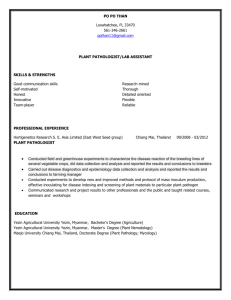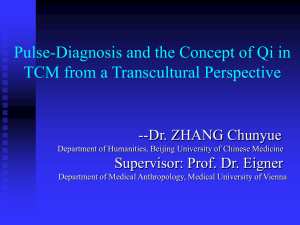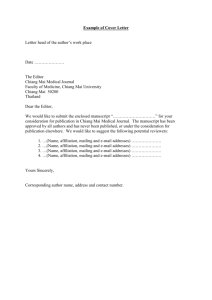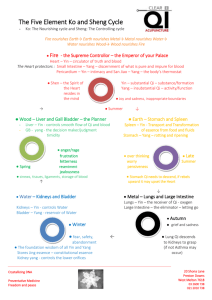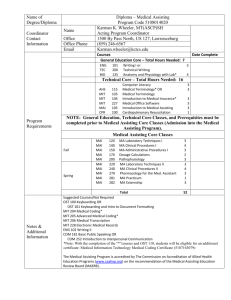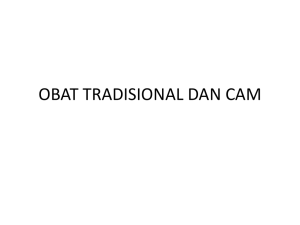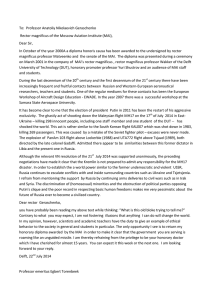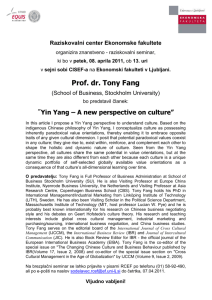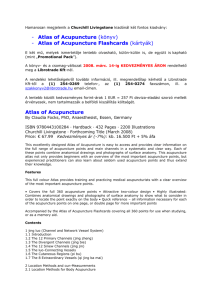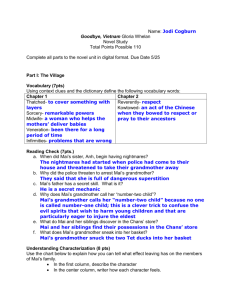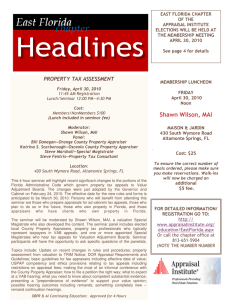Course Title: Survey of Syndromes
advertisement
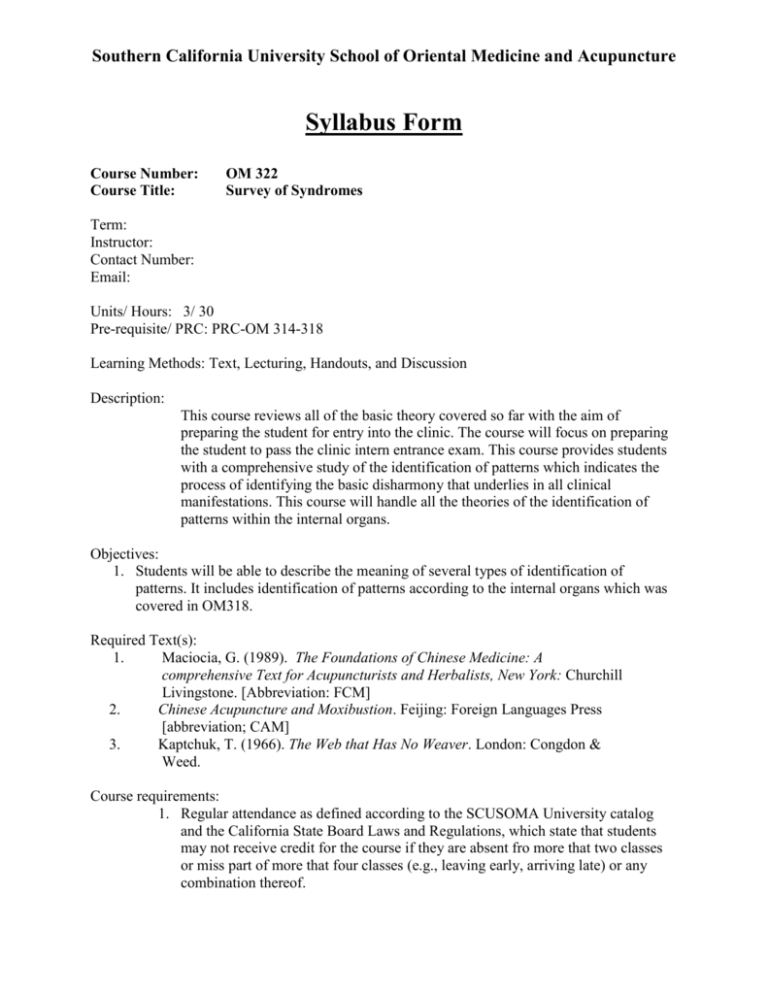
Southern California University School of Oriental Medicine and Acupuncture Syllabus Form Course Number: Course Title: OM 322 Survey of Syndromes Term: Instructor: Contact Number: Email: Units/ Hours: 3/ 30 Pre-requisite/ PRC: PRC-OM 314-318 Learning Methods: Text, Lecturing, Handouts, and Discussion Description: This course reviews all of the basic theory covered so far with the aim of preparing the student for entry into the clinic. The course will focus on preparing the student to pass the clinic intern entrance exam. This course provides students with a comprehensive study of the identification of patterns which indicates the process of identifying the basic disharmony that underlies in all clinical manifestations. This course will handle all the theories of the identification of patterns within the internal organs. Objectives: 1. Students will be able to describe the meaning of several types of identification of patterns. It includes identification of patterns according to the internal organs which was covered in OM318. Required Text(s): 1. Maciocia, G. (1989). The Foundations of Chinese Medicine: A comprehensive Text for Acupuncturists and Herbalists, New York: Churchill Livingstone. [Abbreviation: FCM] 2. Chinese Acupuncture and Moxibustion. Feijing: Foreign Languages Press [abbreviation; CAM] 3. Kaptchuk, T. (1966). The Web that Has No Weaver. London: Congdon & Weed. Course requirements: 1. Regular attendance as defined according to the SCUSOMA University catalog and the California State Board Laws and Regulations, which state that students may not receive credit for the course if they are absent fro more that two classes or miss part of more that four classes (e.g., leaving early, arriving late) or any combination thereof. Southern California University School of Oriental Medicine and Acupuncture 2. Class participation 3. Midterm and Final Examinations 4. Weekly Quizzes 5. Homework assignments Grading: ___% ___% ___% ___% ___% ___% ___% Attendance Class participation Practical Homework Midterm examination Quizzes Final examination Course Outline: Weekly topics, learning objectives and assignments. Week 1. Students will learn the identification of patterns according to the eight principles. It includes Exterior-Interior, Hot-Cold, combination of Hot-Cold pattern, Full-Empty, and YinYang. Students also learn Cold on the Exterior-Heat in the Interior, Heat on the Exterior-Cold in Heats in the Blood, Heat above-Cold below, True Cold-False Heat and True Heat-False Cold, Full conditions, Mixed Full-Empty conditions, and Empty conditions. Week 2 Students will learn the identification of patterns according to the Qi-Blood-Body Fluids. It includes Qi pattern identification of Qi deficiency, Qi sinking, Qi stagnation, and rebellious Qi. Students also learn Blood pattern identification of deficiency of Blood, Stasis of Blood, Loss of Blood and the Interior, and Body-Fluid pattern identification of deficiency ofBody Fluids, Edema, and Phlegm. Week 3 Students will learn the identification of patterns according to pathogenic factors. It includes Wind(External and Internal), Cold(External and Internal), Summer-Heat, Dampness(External and Internal), differences between Dampness and Phlegm, Dryness(External and Internal), differences between Heat and Fire, General manifestation of Fire, organs affected by fire, Full vs Empty-Fire, and toxic Heat. Week 4. Students will learn the identification of patterns according to the six stages. It includes historical development, Greater Yang stage, channel patterns of ‘Attack of Wind’ and ‘Attack of Cold’, organ patterns of ‘Accumulation of Water’ and ‘Accumulation of Blood’, Bright Yang stage of channel pattern and organ pattern, Lesser Yang stage, Greater Yin stage, Lesser Yin stage of ‘Cold transformation’ and ‘ Heat transformation’ and Terminal Yin stage. Week 5. Students will learn the identification of patterns according to the Four Levels. It includes the theory of warm disease, Wei Level patterns of ‘Wind-Heat’, ‘Summer-Heat’, ‘Gall Southern California University School of Oriental Medicine and Acupuncture Bladder-Heat, and ‘Dry-Heat’. Qi Level of ‘Lung-Heat’, ‘Stomach-Heat’, ‘Intestines Dry-Heat’, and ’Gall Bladder-Heat’, and ‘Damp-Heat in Stomach and Spleen’, Ying Level of ‘Heat in Ying Level’, and ‘Heat in the Pericardium’, Blood Level of ‘Heat victorious moving, ‘ Heat victorious stirring Wind’ , ‘Empty Wind agitating in the interior, ‘Collapse Yin’, and ‘Collapse of Yang’, Latent Heat, relationship between the four Levels, Six stages and Triple Burners. Week 6. MIDTERM EXAMINATION. Week 7. Students will learn the identification of patterns according to the Triple Burners. It includes Upper burner of ‘Wind Heat in the Lungs’ Defensive Qi portion’, ‘Heat in the Lungs’, ‘Heat in the pericardium’, Middle burner of ‘Heat in Bright Yang’, and ‘Damp Heat in the Spleen’, Lower burner of ‘Heat in the Kidneys’, ‘Liver-Heat stirs Wind’ and ‘Liver EmptyWind’ Week 8. Students will learn the identification of patterns according to the 12 channels, eight extraordinary vessels, and the five elements. It includes ‘organ vs channel’, channel pathology, and channel patterns of 12 Meridian patterns Week 9. Students will learn the identification of patterns according to the eight extraordinary vessels of Du Mai, Ren Mai, Chong Mai, combined Du Mai and Chong Mai patterns of various conditions. Students also learn the patterns of Dai Mai, Yin Qiao Mai, Yang Qiao Mai, Yin Wei Mai, and Yang Wei Mai. Week 10. Students will learn the identification of patterns according to the five elements. It includes generating sequence patterns of Wood not generating Fire, Fire not generating Earth, Earth not generating metal, Metal not generating , and Water not generating Wood, Wood overacting on Earth, Earth over-acting on Water, Water over-acting on Fire, Fire over-acting on Metal, and Metal over-acting on Wood, insulting sequence pattern of Wood insulting Meta, Metal insulting Fire, Fire insulting Water, Water insulting Earth, and Earth insulting Wood. Week 11. FINAL EXAMINATION
